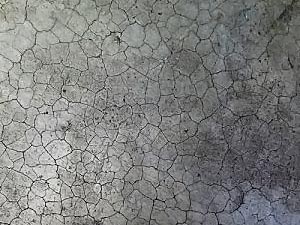Crazing
Summary
Technical Information

Crazing is typically only an aesthetic problem, and doesn’t cause any structural or serviceability issues. It tends to be more visible when floors are wetted and cleaned, as the cracks trap moisture and dust. It shouldn’t be confused with mid-panel cracking due to restrained contraction.
It is most commonly found in power-trowelled floors.
The mechanisms leading to crazing are not fully understood so it’s not really possible to recommend measures that can reduce its occurrence. It is known that crazing is a result of differential shrinkage between the surface layer and the underlying concrete and appears to occur less in concrete with lower water contents.
There is currently no appropriate treatment for crazing, so if its occurrence is unacceptable for the end-user, a surface coating should be considered at the planning stage, incurring additional maintenance costs.
